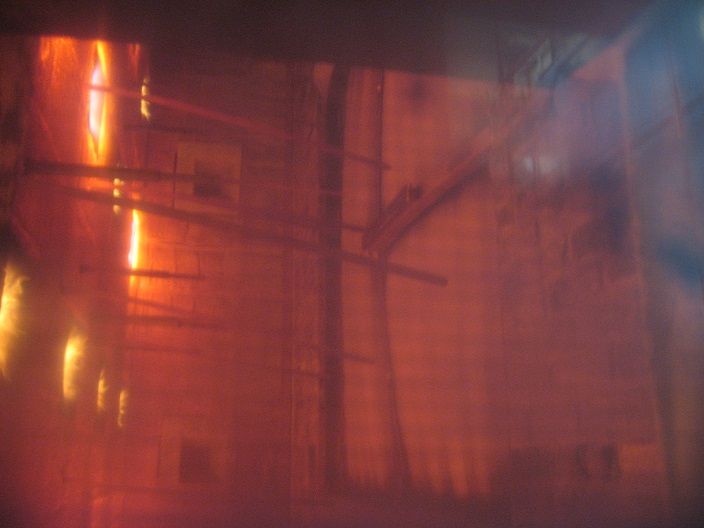Over the years, I’ve come to the realization that if someone has a question, there’s usually someone else out there wondering the same thing. I received a question recently about testing of fire exit hardware – when panic hardware is tested for use on fire doors, is it mounted on the fire side (facing the furnace) or the non-fire-side of the door?
When I attended a couple of fire tests a while back, the doors swung toward the furnace. Those doors did not have fire exit hardware – they had lever-handle locksets, but if a door with fire exit hardware swung toward the furnace that would put the fire exit hardware on the non-fire side. I thought I remembered hearing that the fire exit hardware goes on the furnace side of the door, so I asked one of Allegion’s compliance engineers, Matt Phillips:
When UL certifies fire exit hardware they typically want to see both swings for several reasons:
- An inswinging door is generally the worst case for the fire endurance test as the door will bow into the furnace more since the stop is not there to prevent the movement.
- UL is looking for excessive door movement, secure hardware, and gaps that may open up.
- An inswinging door is not, however, the worst case for a hose stream test since the hose stream impacts the fire side of the door which will push against the frame stops.
- The outswinging assembly lets UL verify the security of the latching hardware under the pressure of the hose stream.
- UL is also looking to see if through openings are created during the hose stream portion of the test.
So there you have it, fire exit hardware is tested both ways to see how the opening will perform when the hardware is exposed to the fire, and also when the hardware is on the opposite side of the door. This ensures that the fire door assembly will perform as designed and tested regardless of the location of an actual fire.
Here are some photos from Matt of a test in progress:
You need to login or register to bookmark/favorite this content.







Aren’t we really concerned only about the latch (and maybe concealed rods or cables)? Once the door is closed and latched, the body of the panic device itself is meaningless in a fire.
It depends on the design of the device. If you have steel rods and an all steel device construction the device could still be partially functional even after a 3 hour fire exposure. The hose stream could impact the remnants of the push bar and actuate the latches releasing the door which would be a failure. On the other hand if you have aluminum components that melt away you could be eliminating the only solid mechanism that prevents the latch from releasing. In a fire event it’s difficult to tell what the effects of different designs and materials may have on the overall security of the product. That’s the reason we test.
I think it is the entire panic device. What about when the hose stream hits the push bar? I’ve always wondered about that – maybe someone here can clarify further.
You are correct, the entire exit device is under evaluation. The hose stream can indeed impact the push bar and open the door. Many manufacturers have design features that will prevent this from happening. Some of those features are dependent on the heat of the fire endurance test to trigger them.
Matthew.
I noticed a lot of bow on the doors.
What is the minimum latch penetration into the strike requirement for vertical latch devices? Is it different from top to bottom?
Chuck,
UL10C doesn’t specifically require a minimum penetration. The conditions for acceptance are that the hardware needs to keep the door closed for the entire classification period and that the latch bolt must remain projected and intact after the test. UL will verify that the latchbolt breaks the plane of the strike. For example, a concealed latch with a pocket style strike must have the latchbolt extended and “in the pocket”. That could be 1/32 inch or 3/4″. If the product kept the door secure through a 3 hour burn and 3+ minute hose stream, that was enough. As far as the bowing you see, that is a due to unequal heating of the internal vs. external skins of the door. The inside heats very rapidly and expands quicker than the outside so the door bows. As the door expansion continues the steel doors will actually wedge themselves into the openings and continue to bow. At the test duration increased the bowing actually begins to relax slightly as the external skin catches up in temperature. The amount of bowing and movement you see in a particular door can be affected by a lot of variable such as construction and core type being used.
When installing hardware for any of the safety components that may be present, such as a fire safety door, it is important to research what the industry standard is before making the installation. Each industry and district has its own requirements, and you wouldn’t want to install it based on incorrect information.